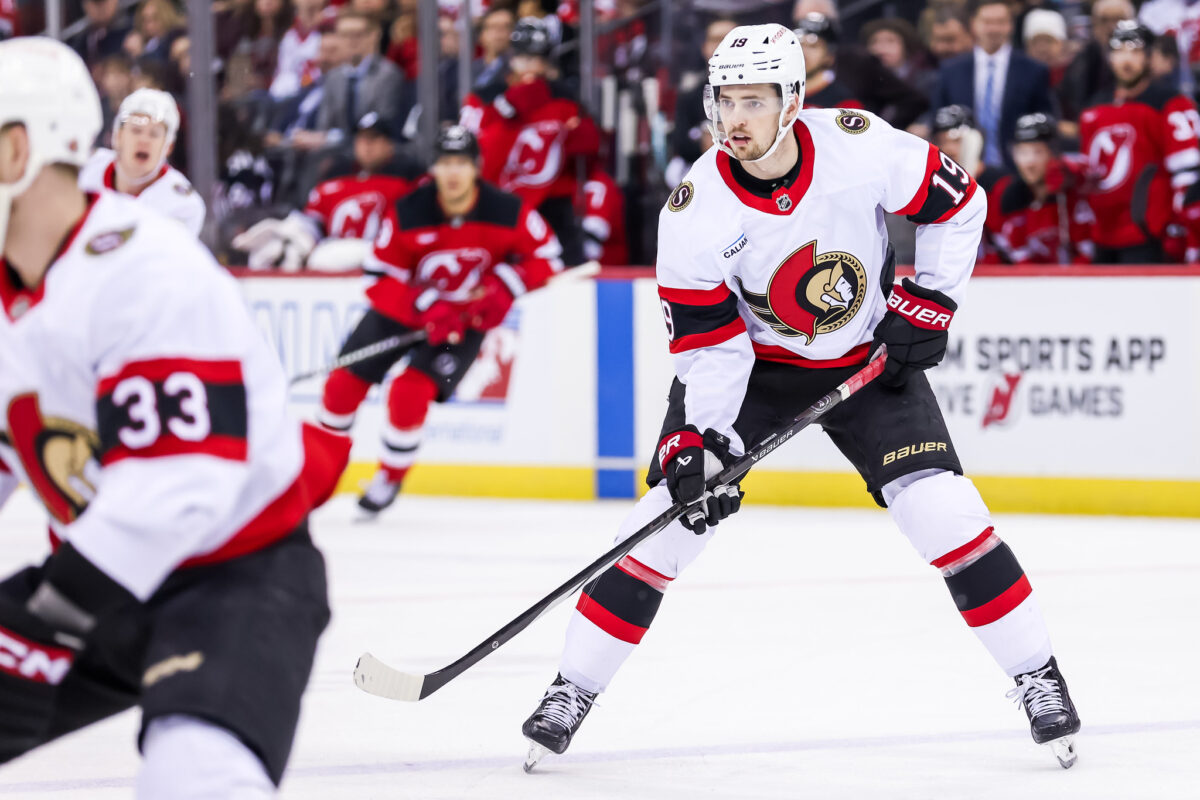In the NHL, special teams can make or break a season. For the Ottawa Senators, they’ve often done both. This season is no exception with the team’s power play showing signs of promise and its penalty kill nothing short of doom.
After 12 games, the Senators have managed to elbow their way into third place in the brutally competitive Atlantic Division with a record of 6-5-1. Here’s a look at how their penalty kill and power play help explain how they got there.
Senators’ Power Play Shines
Scoring is not among the Senators’ shortcomings to this point in this very young season. With 45 goals, no team in the Atlantic has scored more. In fact, at time of writing, Ottawa strides atop the entire league as measured by goals-for (GF).
Part of the reason for this is their power-play percentage (PP%) of 28.89% – sixth-best in the NHL. Their 29 goals so far this season at even strength put them at 10th, but add in their 13 power-play goals, and the Senators are transformed into one of the most potent offensive threats in the league.
This is a marked improvement over last season when the Senators’ PP% was 23.8% for 12th in the league. This season, the closest any team in their own division comes to equaling them is the Montreal Canadiens (28.1%). When it comes to their power play this season, the Senators are ranked sixth overall.
The question is whether all of this will last. That depends on whether Dylan Cozens, Drake Batherson, Tim Stutzle and David Perron can maintain their pace. Together, they have notched nine of their team’s 13 power-play goals with Cozens (3) leading the way.

What seems to be working for the Senators’ power play is the chemistry on the first unit of Batherson, Stutzle and Cozens. In general, the Senator’s two power-play units seem to be getting cleaner entries into the offensive zone. Their puck movement is faster, and they are getting better quality shots.
Even so, there is sometimes too much play from the perimeter and not enough of a net-front presence with Brady Tkachuk out of the lineup. Not only that, but there is an overreliance on the top power-play unit that most of the time consists of Ridly Greig, Stutzle, Batherson, Cozens and D-man Jake Sanderson. In all, that combination accounts for nine of the Senators’ 13 power-play goals.
Senators’ Penalty Kill Disappoints
On the surface, it’s tough to sugarcoat the Senators’ penalty kill. Their penalty kill percentage (PK%) of 62.2% ranks 31st in the league. That’s far worse than their PK% last season which at 77.7%, while below the NHL average, still put them at 19th overall.
Still, these numbers don’t tell the whole story about the Senators’ penalty kill. It looks bad because of how dismal it was over the first five matchups of the season. Over those games, the Senators were undisciplined and were forced to play shorthanded 20 times, giving up nine goals. In other words, when the Senators were serving time in the sin bin, their opponents had an almost 50/50 chance of lighting up the goal lamp behind Ottawa’s starting puck stopper, Linus Ullmark.
Related: 5 Takeaways from Senators’ First 5 Games
The situation looks much better now. Over the games they played from Oct. 18-30, the Senators gave up five goals on 17 penalty kills. In other words, their PK% improved to a much more respectable 71%. That’s still not much to celebrate in a league where the average PK% is 78.8%. Yet it still represents progress toward a respectable penalty kill.
Some of the team’s penalty kill struggles fall at Ullmark’s skates. Prior to their win against the Washington Capitals on Oct. 25, Ullmark registered a 2.61 goals-against average (GAA) at even strength. Yet, on the penalty kill, that jumped to a brutal 9.93 GAA and a .667 save percentage (SV%) against high-danger shots while down a man. All that resulted in eight goals against while killing penalties, or over 30% of Ullmark’s total.
Related: Senators Finally Giving Linus Ullmark the Support He Needs
Many Senators fans complain that the Senators are using the “diamond” setup or the “1-2-1” formation on the penalty kill in their own end, claiming that it’s hardly used anymore in the league. That’s not true – it’s used plenty. Still, the formation has its drawbacks, including making the weak side vulnerable and allowing dangerous cross-slot passes. Opponents down low near the flanks are tough to cover, and the Senators have paid the price more than once, giving up goals down low from the side of their net.
While the Senators’ penalty kill isn’t as bad as it seemed at the start of the season, it has to improve. It’s plagued by faceoff losses, poor clearing attempts and embarrassing turnovers. Head coach Travis Green knows as much, saying at a presser after his team’s embarrassing loss to the Buffalo Sabres on Oct. 15 that, “It’s an area we need to improve. It’s an issue here (in front of the media) and it’s an issue in our room.”
Senators’ Special Teams Could Decide Their Season
Who knows how many points the Senators could add to their total this season if their power play can remain in the top tier and their penalty kill could be at least average. Those points could mean the difference between making the playoffs or not, and if they do, winning a postseason series or two next spring.



